Leaps and Legends: A remarkable dive (literally) into Pentecost’s Nagol Tradition
We’d booked the last land diving of the season weeks in advance. This ancient ritual, where young men leap from tall wooden platforms with vines tied to their ankles, is both a test of courage and a passage into manhood. It also marks the start of the yam season, ensuring a plentiful harvest. Yams and bravery—what more could you ask for?
Fun fact: this tradition inspired bungee jumping. No, not through AJ Hackett, the Kiwi who turned it into a global thrill, but through the Oxford University Dangerous Sports Club. They spotted this vine-leaping madness in Vanuatu and thought, “Let’s try that—preferably with more waivers.”
The Ambrym event would’ve taken two days, but with our land diving adventure (called Nagol) planned, we left early. Upon arriving in Homo Bay, Pentecost, we were met with the news that our tour had been cancelled due to a wedding. The next (and final) tour was rescheduled for Monday, conveniently when other yachts would also join. We couldn’t help but feel we’d been bumped to increase the group size, but when we saw the effort required to prepare for the Nagol, it all made sense. Still, some of the crew weren’t impressed and made their feelings known. Island politics, eh?
Personally, I didn’t mind. If we missed out, it wasn’t the end of the world. This is the Pacific—things run on “island time,” where changes of plan or cancellations are as common as coconuts. If it wasn’t meant to be, so be it. Plus, there was actually a wedding happening in the village right by our anchorage, though the Nagol was up in the mountains at Pangi Village. Luckily, our skipper decided to wait, so we joined Monday’s tour.
In the meantime, we wandered around the beach to kill time. We stumbled upon the so-called “James Cook Rock,” allegedly engraved by the man himself. While exploring, we met our new mate, Davinson. He joined us for the walk, sharing fascinating stories about land diving and Captain Cook’s exploits. He even invited us to his place for kava. As much as we wanted to accept, our two-hour shore window forced us back to the boat. A short but sweet stroll with some solid local tales—cheers, Davinson!
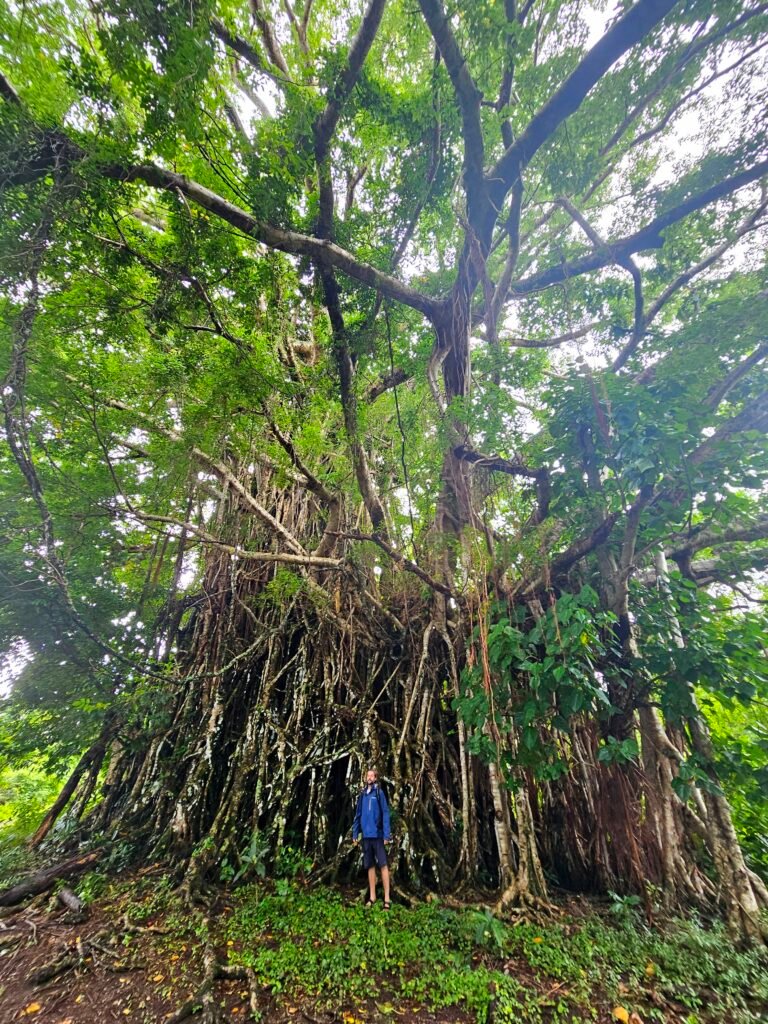
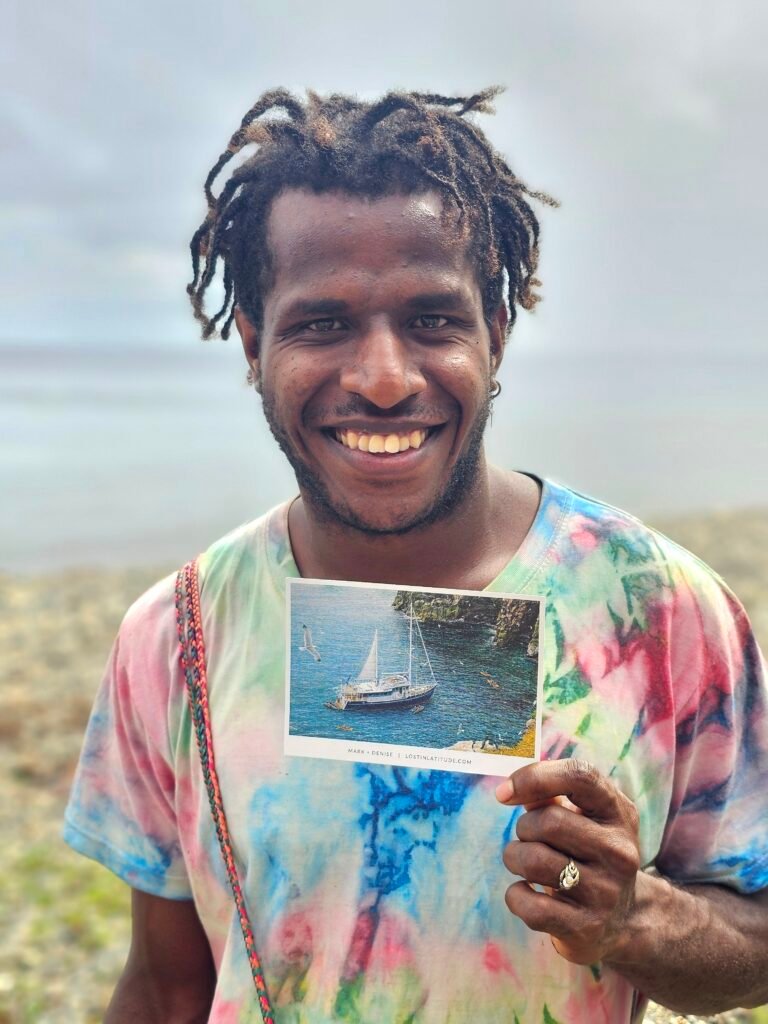
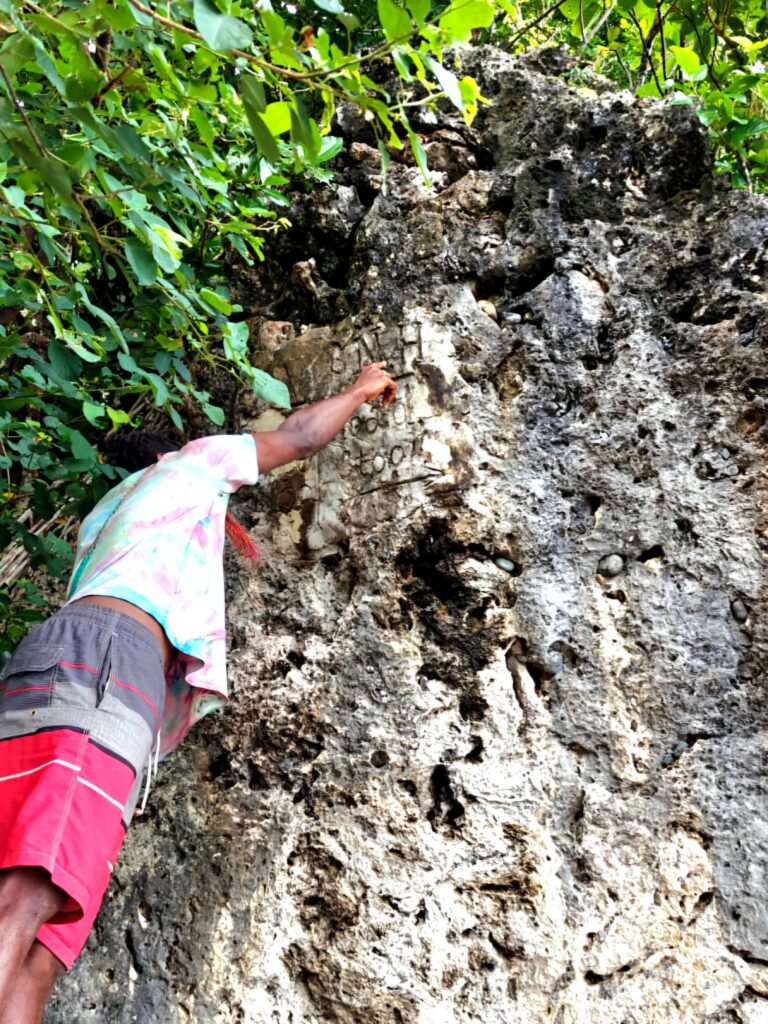
Finally, Monday rolled around. At 8 am, we were ashore and ready to roll. We even swung by another yacht, Navicula Blue, whose crew, Simon and Line, were still munching breakfast. They’d been told to meet at 9 am, but quickly got ready and joined us.
At the beach, we were greeted by some very “merry” locals still celebrating Friday’s wedding. It was pouring rain, and everyone was a bit confused about when and where to meet. The drunken locals kindly tried guiding us through the village to the street, but their stumbling and falling provided endless amusement for us and everyone watching. After an hour of standing around, chatting with locals, kids, and yachties, our ride—a van—finally arrived.
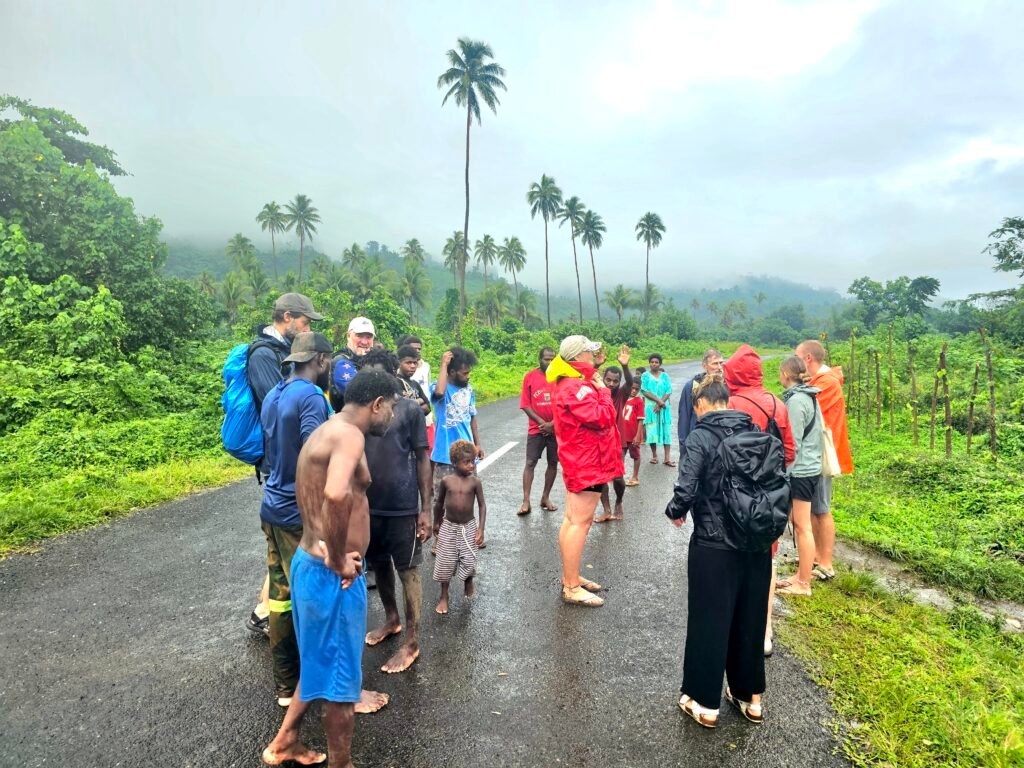
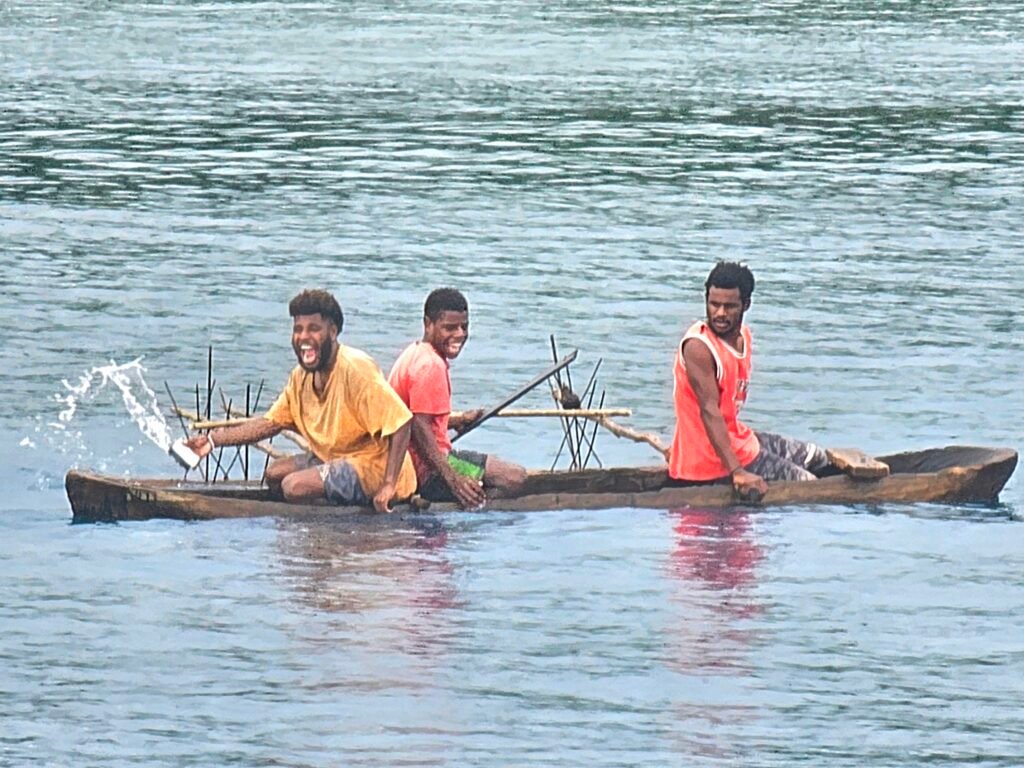
Up in the mountains, the waiting continued as village ladies prepared floral decorations for our welcome ceremony. When it kicked off, we were adorned with beautiful flower arrangements—well, all of us except one of our crew. Upsi daisy! A little miscount, which was quickly sorted. Then it was time to pay the chief our tour fee. In true island style, we had to write our own receipts for government records. The trip so far was hilarious, and we couldn’t wait for the land diving. At many of these traditional events, women must cover their knees and shoulders, which is why I always carry a sarong. You never know when you’ll need to pop into a chief’s house or a village where modesty rules still hold sway—thanks to the Christian missionaries, of course.
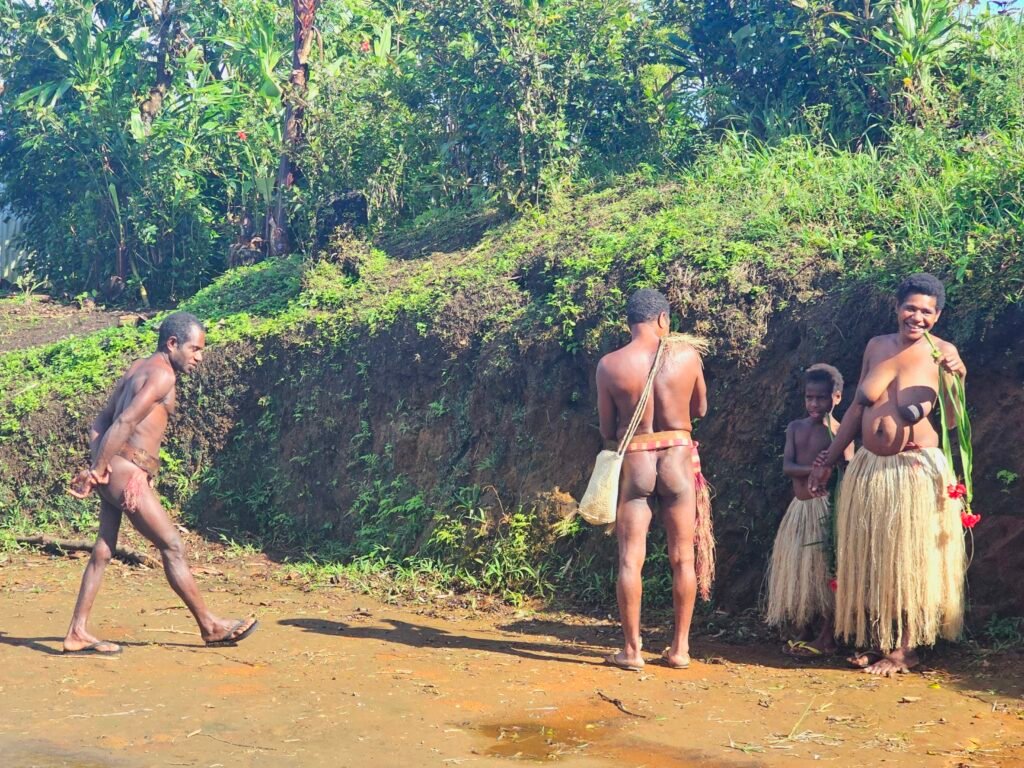
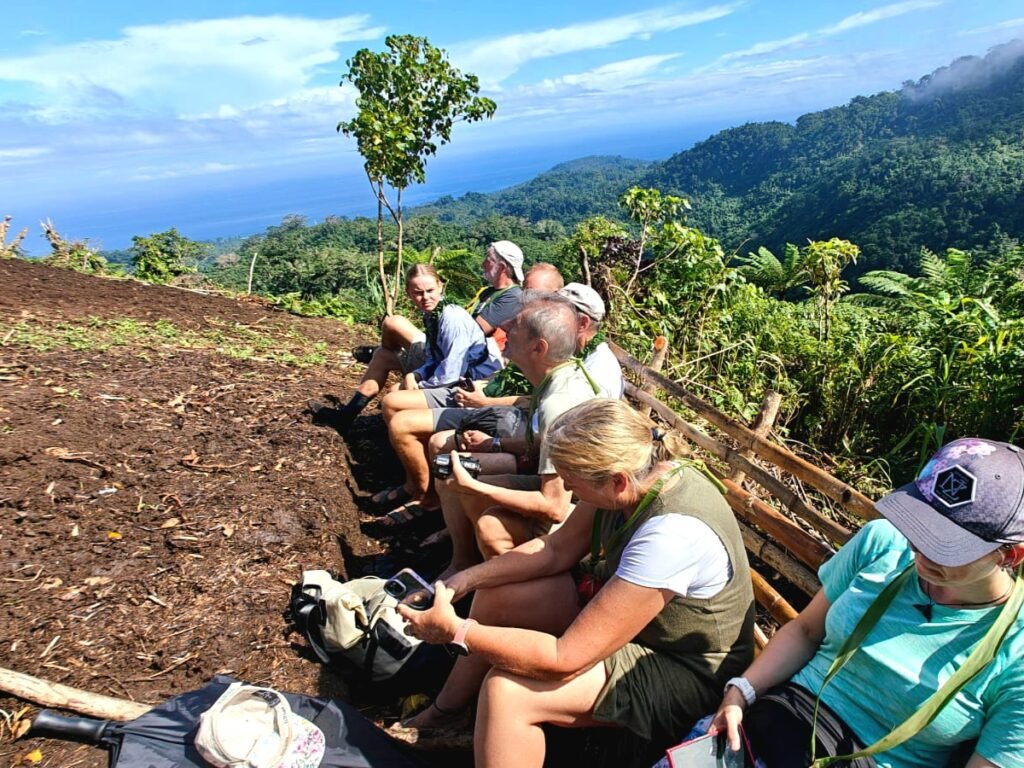
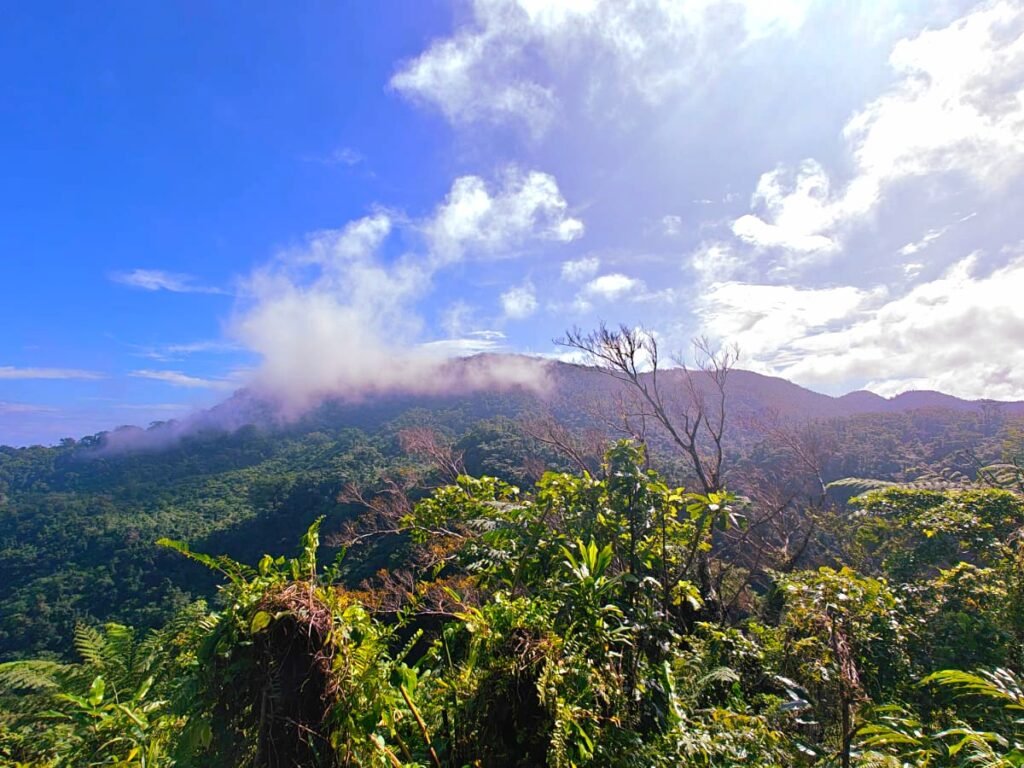
After a short walk, we arrived at the land diving tower. And what a sight! This 20–30-metre DIY structure, built in just five weeks from vines and wooden stilts, loomed against the backdrop of clearing rain and lush mountains. We were carefully guided to our seats, as it was slippery from the rain, and behind the seats was just a sheer cliff. The ceremony began with the chief’s speech, translated by our guide. Below the tower, the ground was roughed up with sticks to soften the jumpers’ landings—yes, they actually hit the ground.
The first jumper was just 10 years old. With vines tied to his ankles and villagers dancing and chanting, he psyched himself up for his first-ever leap. After what felt like an eternity of encouragement, he jumped. It looked like he might’ve hurt himself, but the crowd quickly scooped him up, celebrating his bravery before he even had time to feel the pain.
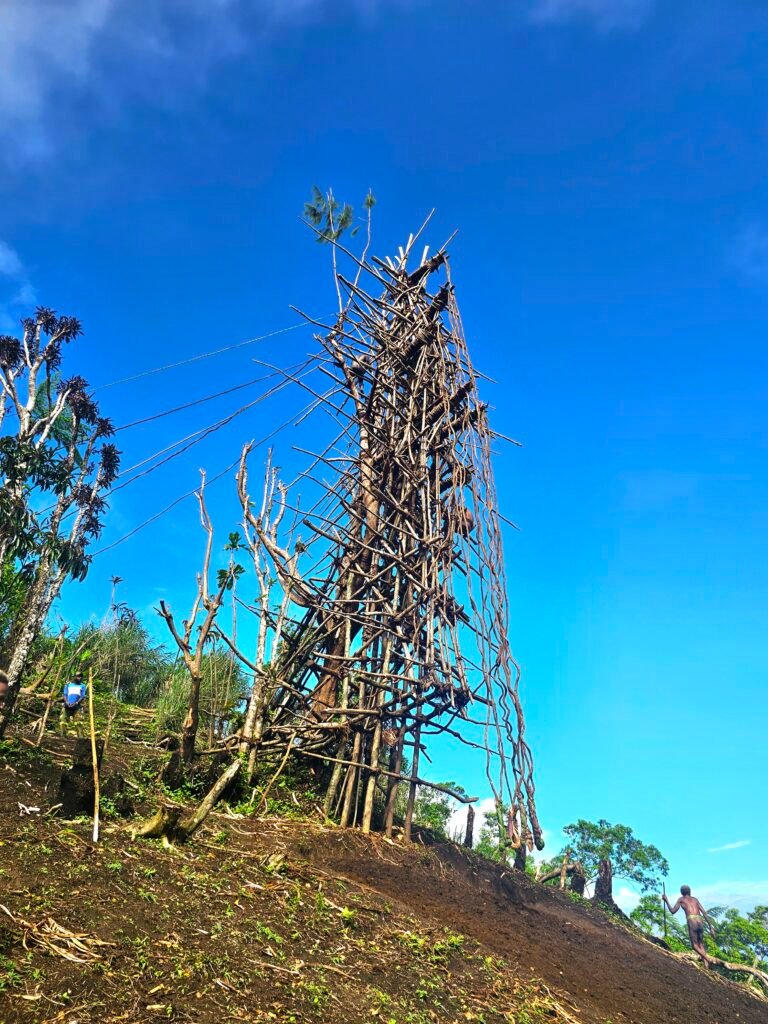
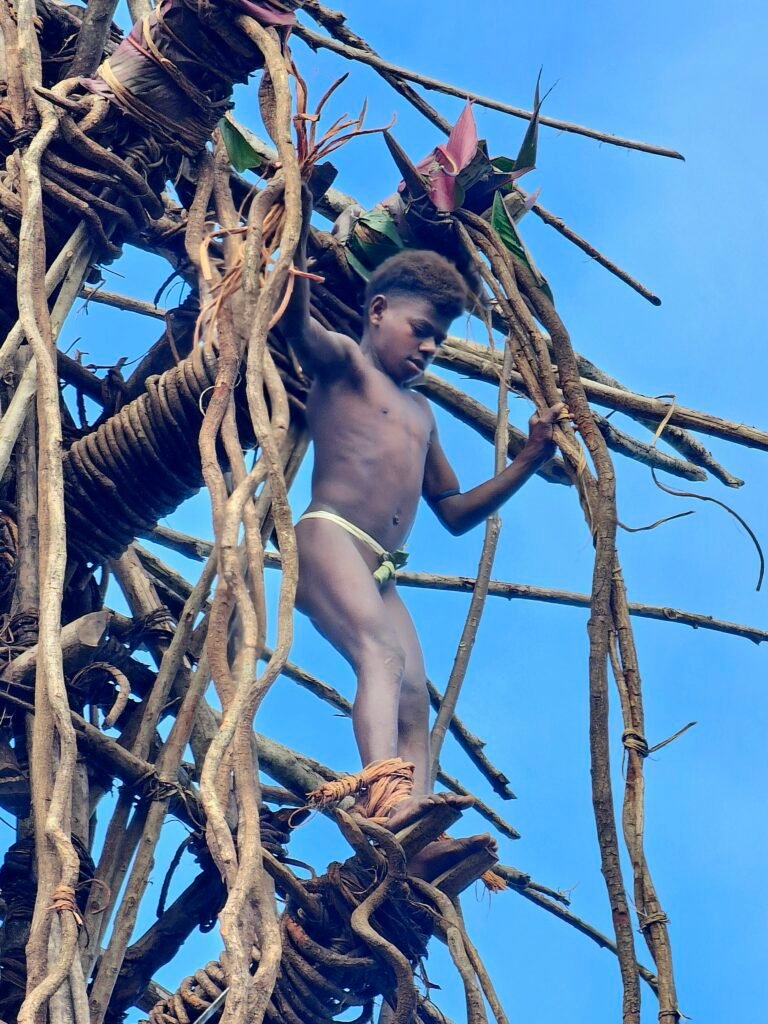
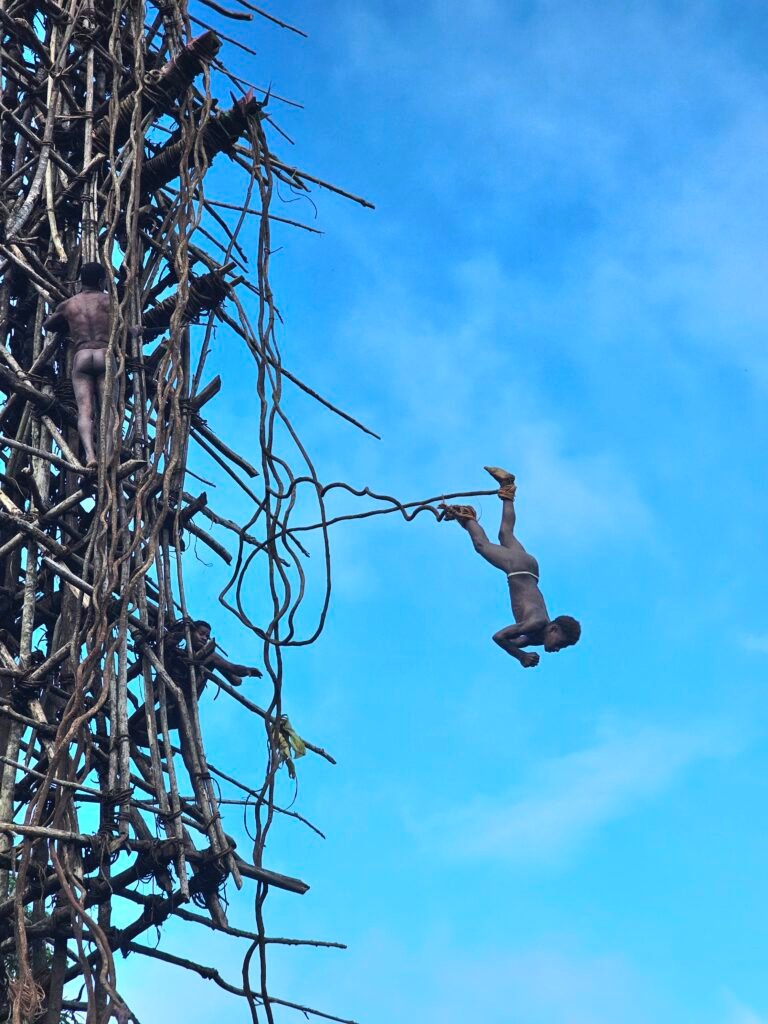
Each jumper climbed higher, with platforms spanning five levels. The vines stretch from the jump and the platform snaps with an audible crack, creating a bounce effect that usually protects the jumpers from serious injury. According to Guinness World Records, the G-force at the dive’s lowest point is the highest experienced by non-industrialised humans. Fatalities do happen, like when someone tragically broke their neck during a dive attended by Queen Elizabeth II. Thankfully, there were no injuries that day—just awe-inspiring leaps and plenty of nerve-wracking moments for us spectators.
The final jump of the day was the most thrilling. From 25 metres up, the man psyched himself up, then leapt. The moment he hit the ground, the entire village ran to him, lifting him high and singing in celebration of his bravery. It was a breathtaking finale to an unforgettable day.
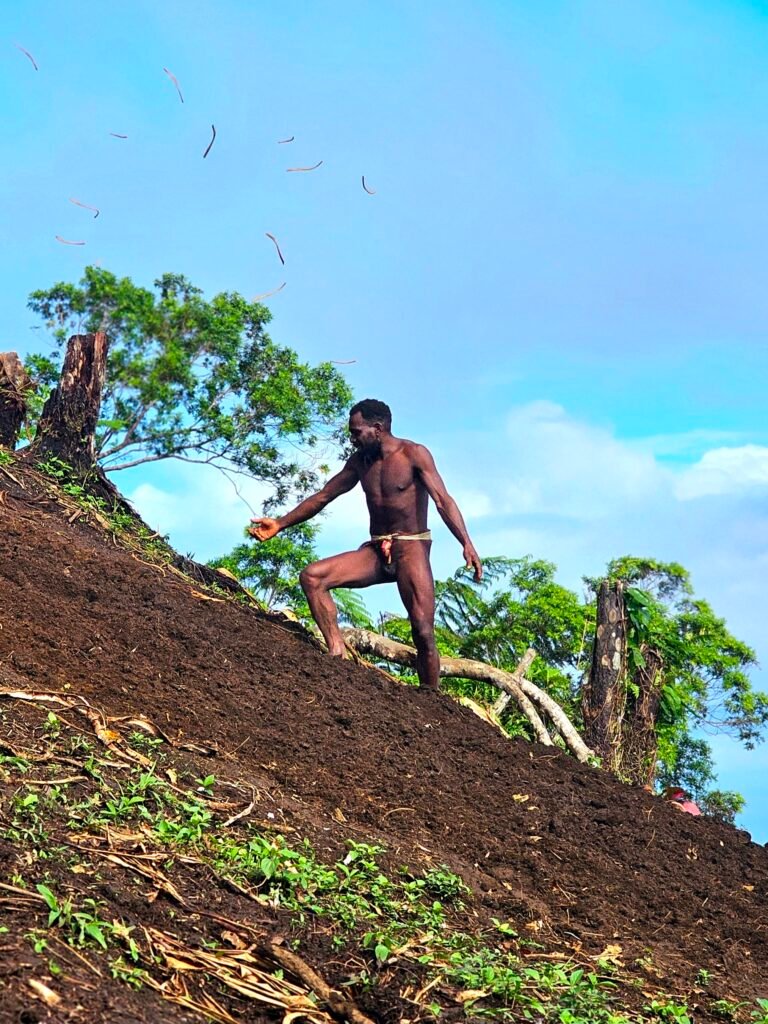

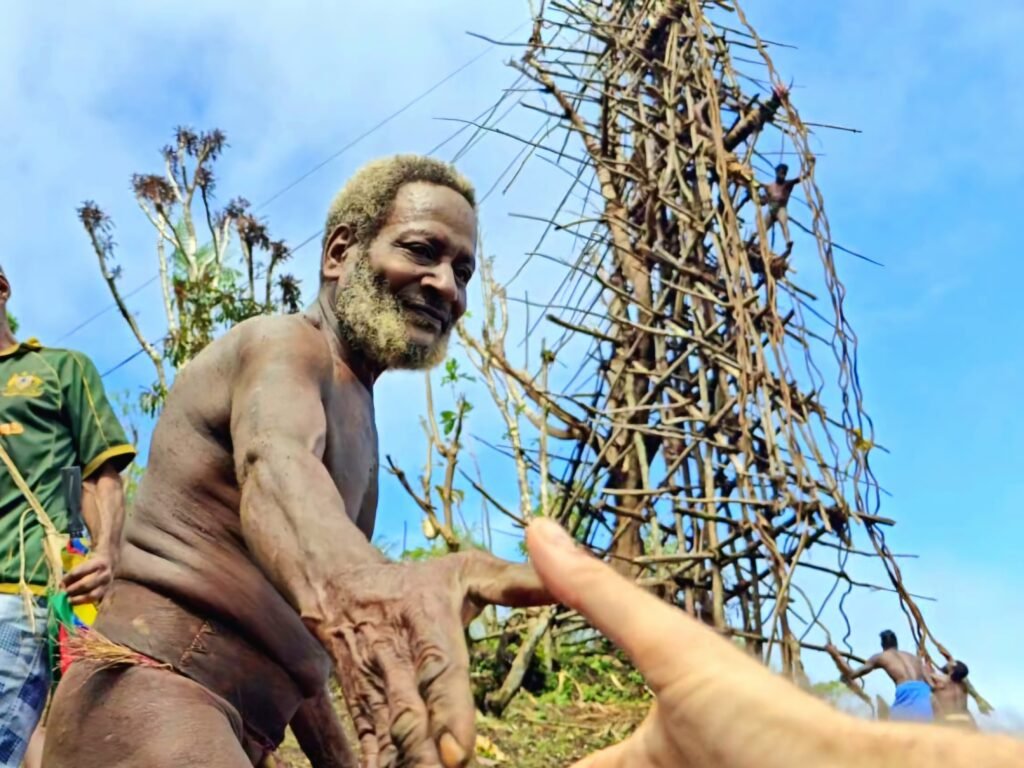
The entire experience—from the waiting, the rain, the chaos, to the heart-stopping jumps—was a wild ride. If you haven’t already, check out our video below to see it all for yourself!
